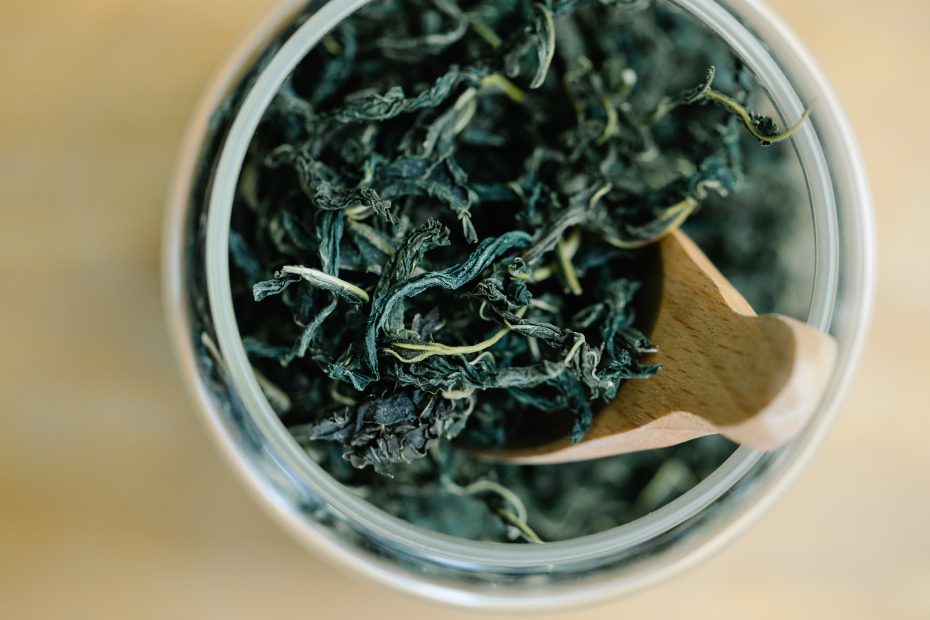Gyokuro is a Japanese green tea, considered one of the finest and most valuable in the world.
Its reputation is first and foremost due to the special processing method to which this tea is subjected.
This fine Japanese tea comes with dark green needle-shaped leaves, has a sweet, smooth flavor and an absolutely unique fragrance, not comparable to any other tea on the market.
What is Gyokuro?
Gyokuro was first grown in 1835, and today it is primarily produced in the Japanese prefectures of Yame, Uiji, and Asahina.
If you’re interested in finding out more about the origins of tea in Japan, see our article.
Gyokuro tea, commonly referred to as Pearl Dew or Jade Dew, is produced using an extremely unique processing technique; it is only ever collected once a year from specific estates.
This makes this tea rather expensive and hard to find, but a good Gyokuro is definitely worth the price you pay.
How Gyokuro is produced
Gyokuro tea is a green tea grown in a foggy, rainy area at lower altitudes than Sencha.
A few weeks before plucking, the plant is covered with black cloths or with bamboo and straw so that about 90 percent of the sunlight is filtered out. The shading reduces the photosynthesis process, thus increasing the chlorophyll content. Tea becomes sweeter and less astringent as a result of the leaves turning dark green and the reduction in tannin concentration.
Only the youngest buds, harvested only once a year (in spring), are used for Gyokuro production. After being harvested, the leaves are promptly steam-treated to halt oxidation and maintain their distinctive flavor.
Gyokuro green tea leaves are rolled numerous times after they have cooled to soften them, speed up drying, and give them their distinctive needle shape.
To further reduce the moisture content, the leaves are dried again. At this point, the tea leaves are called “aracha” and will be divided according to different grades of quality, called “tencha.” Only those of the best quality are used to produce Gyokuro.
The leaves are then cooked one last time and aged for several months before being packaged and placed on the market.
How to prepare Gyokuro tea
Gyokuro is also considered a highly prized tea in Japan, so it should always be prepared following the right procedure so as not to spoil its flavor and aroma.
Gyokuro should be infused in water at a lower temperature than other green teas, with a longer infusion time. The ideal is 60-90 seconds at 50/60°C. A higher temperature will release the tea’s more bitter notes, while an infusion that is too short will not allow the leaves to release their natural sweetness. The amount of Gyokuro per cup (20 ml) is approximately 4 grams.
One method used in Japan to lower the temperature to the desired 50 to 60°C is to pour the boiling water first into a teapot (houhin), then into cups, then into another container called a yuzamashi. Only at this point is the Gyokuro steeped in the houhin (teapot) and then poured into the cups. During each step, a cooling of about 10°C is estimated, which brings the water from the boiling temperature (100°C) to the desired 50-60°C or so.
If you don’t have equipment worthy of a Japanese tea room, don’t worry: you can pour the tea 4 times, using the cups and two different containers. Alternatively, you can also use a thermometer, of course.
Pour the tea into the different cups a little at a time (just as you would with coffee) so that there is an even strength in all the cups.
Gyokuro can be infused several times, usually 3 or 4. The only trick to use is to slightly lengthen the infusion time each time, never exceeding 3 minutes.
All done? All that’s left is to enjoy Gyokuro: the finest Japanese green tea there is.
